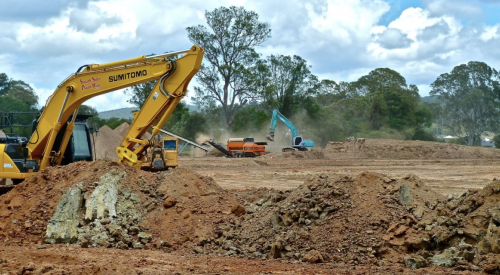| Matt Plaskoff mpc@plaskoff.com
|
Your business begins with sales and marketing, and it ends with administration and the bottom line. Without clients and business, you do not have a business. Without profit and cash, you do not have a business for long. This makes measuring your financial success a critical part of your metrics plan. Your administrative department must provide timely, accurate information for you to make important fiscal decisions such as whom to hire, how much to pay, what to buy (capital expenditures) and whether you can expand.
At Plaskoff Construction, we measure the basics such as revenue, general and administrative (G&A) expenses, cash position and profit, but we also measure other important markers such as accounts receivables days outstanding and average job size. As discussed in previous columns, for each department we developed a plan supporting the overall company goals in our business plan. Revenue was outlined as one of the keys as it essentially determines the size of our company. The revenue goal is tracked monthly, though that's difficult to do. Many construction projects go through phases, such as drywall and trim-out, that might generate less revenue than other phases, such as rough carpentry or cabinetry. So we look at monthly revenue but also at three-, six- and 12-month averages.
Installed Margin
Your gross margin (or gross profit) might follow the same pattern. For us, gross margin installed per month is critical. We care less about how much revenue we install than how much profit we install. If we install our expected gross profit, we have installed enough construction to cover our G&A expenses and net profit needs. A lack of gross margin installed tells us we need to make that up in the next month or cut back on expenses.
For example, we have had occasions when three of our 10 projects were delayed for some reason not billable to the client, such as weather or permitting. We knew we ultimately would install the profit (and revenue) from these projects but needed to be sure it happened in the next month so we didn’t fall too far behind in our goals. This meant we had to increase our goal for the next month, too - not only the expected margin for that month but also for the shortfall in the previous month.
We notified our vice president of production, and he met with his team to figure out how we could do this. We left the expenses as expected because he had a plan to install the margin. If he had indicated he could not do it with the resources he had, we could have added resources or decided not to spend on optional things that were not critical at the time.
The idea is to make those decisions using the data administration provides. The data must be timely. Administration has the responsibility of providing the data as quickly as possible so you can move quickly and avoid problems. Our benchmark is 10 days after the close of the month.
Other Metrics of Importance
While revenue, gross margin, expenses and net profit are obvious, Plaskoff Construction also uses less obvious - but equally important - metrics that administration must provide: receivable days outstanding, average job size and cash position.
Receivable days outstanding means, on average, how long it takes to get your money from your clients. This is not only a cash question - it actually can measure client satisfaction, too. We believe that if our clients are happy, they pay quickly. If they're not happy, they most likely don't. We have found that getting honest survey information about client satisfaction during construction is difficult at best. But we have learned that if we finish projects and pickup on time and meet our schedules and quality and service goals, our accounts receivable days outstanding is about 18 to 20 days. When it climbs, we often find that failure to deliver causes it. Production can use this administrative metric to measure its success.
Average job size is another metric other departments can use. As discussed in the columns on sales and estimating, average job size affects many other measurements, including how many leads need to be generated, how many jobs need to be sold and how many proposals need to be written. We find that when our average job size drops below $250,000, all departments work harder for less. To maintain our revenue and profit goals, we need to estimate, sell, build and administrate more projects. This burdens everyone. Because the lead mix indicates what our average job size will be, we can go after larger projects when our job mix becomes undesirable. Administration updates us on our current average job size, and Sales can adjust.
We also track sold job size versus current job size and can monitor what our average job growth or "upsell" is. This helps Sales inform clients of what to expect and also tells us if our project managers are doing such a great job that our clients are buying more from us.
|
Administration Metrics Sheet
|
||||||||||||||||||||||||||||||||
|
Managing Cash
Finally, administration provides us with our cash position. You can be making all the money in the world, but if you can’t collect it, don't have it or are spending it too fast, you could find yourself unable to keep the doors open. You must pay your vendors, your employees and your bills. Cash has nothing to do with profit.
We manage cash weekly, not just monthly. I suggest you do the same. If you find cash tight, check your accounts receivable days outstanding or look at whether you are paying your bills too quickly. Now might not be the time to pay early and take discounts.
By the way, cash will lag revenue. In other words, high-volume installation will generate a great deal of costs. So recognize that you might have a large sum of cash in the bank this month but that next month you will pay for collecting that cash. This is a key leading and trailing indicator. Revenue and cash lead a high outflow the next month. A high outflow in a month is a trailing indicator of previously high revenue and cash.
Measuring Success
We've talked about how administration can provide metrics for us to use to manage our business, but we really haven’t touched on how we measure administration’s success. How does Plaskoff Construction measure that? We think that if we receive accurate, timely financial statements within 10 days of the close of a month and weekly metrics and forecasts, administration has done its job. We also think that if accounts receivable days outstanding runs low, administration is collecting. Finally, if our cash position is good, administration is managing cash appropriately.
Be sure to reward your administrative department. Although it does not directly generate profit or sales, it’s clearly an indispensable part of your team.












